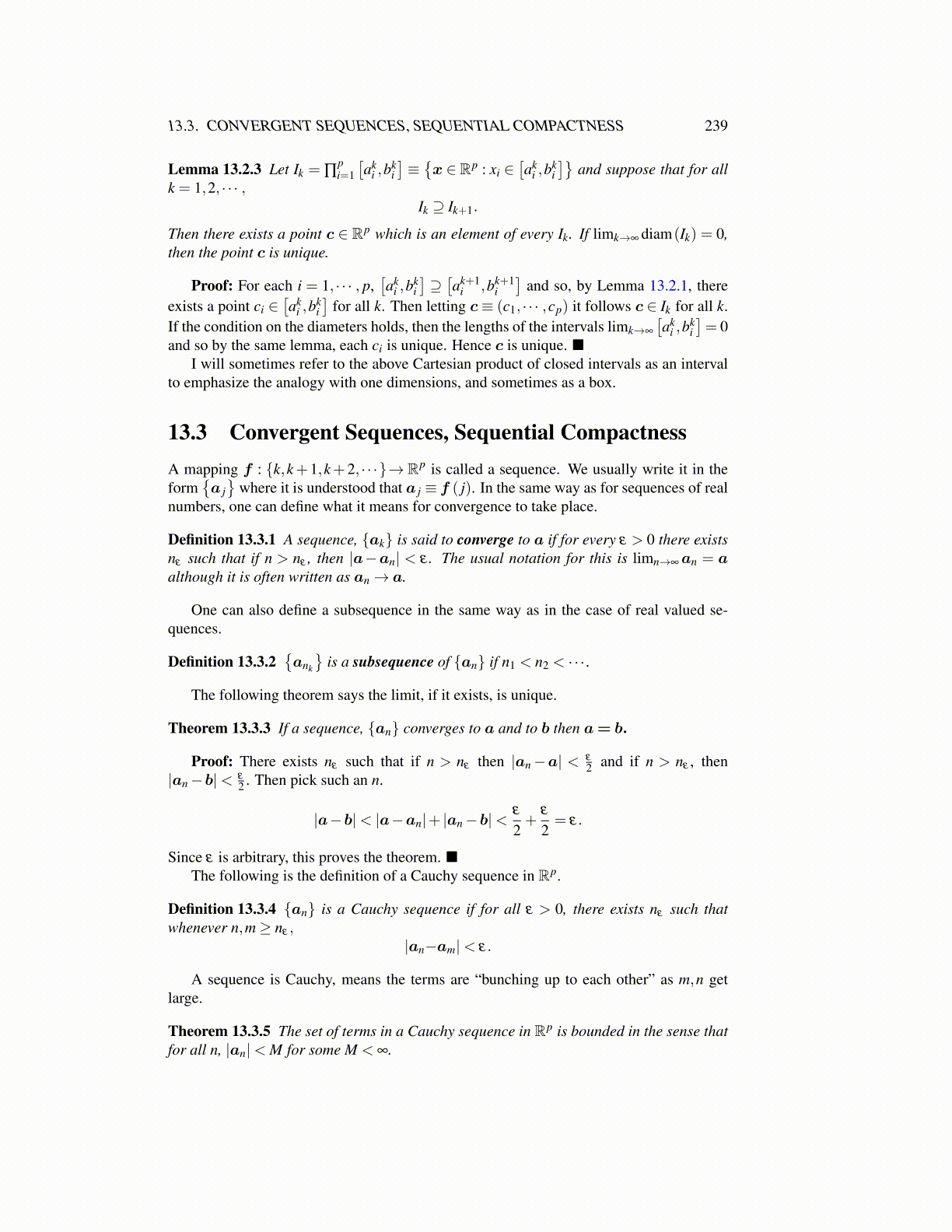
13.3. CONVERGENT SEQUENCES, SEQUENTIAL COMPACTNESS 239
Lemma 13.2.3 Let Ik = ∏pi=1
[ak
i ,bki]≡{x ∈ Rp : xi ∈
[ak
i ,bki]}
and suppose that for allk = 1,2, · · · ,
Ik ⊇ Ik+1.
Then there exists a point c ∈ Rp which is an element of every Ik. If limk→∞ diam(Ik) = 0,then the point c is unique.
Proof: For each i = 1, · · · , p,[ak
i ,bki]⊇[ak+1
i ,bk+1i
]and so, by Lemma 13.2.1, there
exists a point ci ∈[ak
i ,bki]
for all k. Then letting c≡ (c1, · · · ,cp) it follows c ∈ Ik for all k.If the condition on the diameters holds, then the lengths of the intervals limk→∞
[ak
i ,bki]= 0
and so by the same lemma, each ci is unique. Hence c is unique. ■I will sometimes refer to the above Cartesian product of closed intervals as an interval
to emphasize the analogy with one dimensions, and sometimes as a box.
13.3 Convergent Sequences, Sequential CompactnessA mapping f : {k,k+1,k+2, · · ·}→ Rp is called a sequence. We usually write it in theform
{a j}
where it is understood that a j ≡ f ( j). In the same way as for sequences of realnumbers, one can define what it means for convergence to take place.
Definition 13.3.1 A sequence, {ak} is said to converge to a if for every ε > 0 there existsnε such that if n > nε , then |a−an| < ε . The usual notation for this is limn→∞an = aalthough it is often written as an→ a.
One can also define a subsequence in the same way as in the case of real valued se-quences.
Definition 13.3.2{ank
}is a subsequence of {an} if n1 < n2 < · · · .
The following theorem says the limit, if it exists, is unique.
Theorem 13.3.3 If a sequence, {an} converges to a and to b then a= b.
Proof: There exists nε such that if n > nε then |an−a| < ε
2 and if n > nε , then|an−b|< ε
2 . Then pick such an n.
|a−b|< |a−an|+ |an−b|< ε
2+
ε
2= ε.
Since ε is arbitrary, this proves the theorem. ■The following is the definition of a Cauchy sequence in Rp.
Definition 13.3.4 {an} is a Cauchy sequence if for all ε > 0, there exists nε such thatwhenever n,m≥ nε ,
|an−am|< ε.
A sequence is Cauchy, means the terms are “bunching up to each other” as m,n getlarge.
Theorem 13.3.5 The set of terms in a Cauchy sequence in Rp is bounded in the sense thatfor all n, |an|< M for some M < ∞.